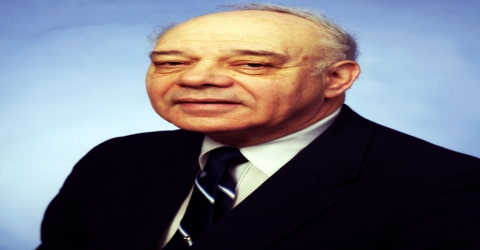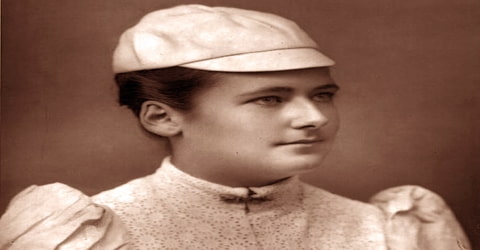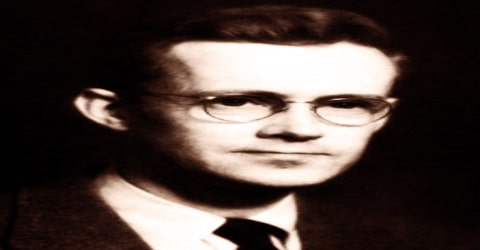Biography of Jerome Karle
Jerome Karle – American physical chemist.
Name: Jerome Karle
Date of Birth: June 18, 1918
Place of Birth: New York City, New York, United States
Date of Death: June 6, 2013 (aged 94)
Place of Death: Annandale, Virginia, United States
Occupation: Chemist
Father: Louis Karfunkle
Mother: Sadie Helen (Kun)
Spouse/Ex: Isabella Helen (Lugoski) Karle (m. 1942)
Children: 3
Early Life

A Nobel Prize-winning American crystallographer, Jerome Karle was born on June 18, 1918, in New York City, New York, U.S. the son of Sadie Helen (Kun) and Louis Karfunkle. Jointly with Herbert A. Hauptman, Karle was awarded the Nobel Prize for Chemistry in 1985 for their development of mathematical methods for deducing the molecular structure of chemical compounds from the patterns formed when X-rays are diffracted by their crystals.
Karle worked on the Manhattan Project for three years, after receiving his Ph.D. in physical chemistry. Thereafter, he joined the US Naval Research Laboratory (NRL) and eventually became its chief scientist for research on the structure of matter. Meanwhile, after World War II, he collaborated with Hauptman at the NRL on the study of crystal structures. They derived mathematical equations to describe the arrangements of numerous spots that appear on photographic films, as a result of a crystal’s diffraction of X-rays. Their equations made it possible to identify the exact location of atoms within the crystal’s molecules, based on an analysis of the intensity of the spots. Although their method was published in 1949, it remained useless for quite some time, awaiting its potential applications. Gradually, crystallographers began utilizing the method to determine the three-dimensional structure of small biological molecules. Using the powerful computers of the 1980s, this innovative method reduced the time taken to determine the structure of a simple biological molecule from two years to only two days. He worked at the NRL for more than 60 years and retired in 2009.
Childhood, Family and Educational Life

Jerome Karle, original name Jerome Karfunkle, was born into a Jewish family on 18th June 1918 in New York City, New York, the U.S. His parents were Sadie Helen (Kun) and Louis Karfunkle. Karle’s mother was a pianist, and she taught her son everything she could.
Karle had played piano as a youth and had participated in a number of competitions, but he was far more interested in science. Karle not only learned to play the piano as a young boy but also participated in the ‘Music Week’ competitions held in New York City. Although he was fairly successful in music competitions, he soon realized that public performances didn’t interest him at all. Instead, he discovered his interest in science and decided to pursue it as a full-time career. He also loved to play sports, but he saw that more of a hobby than a career path, unlike science.
Karle attended Abraham Lincoln High School in Brooklyn, and would later join Arthur Kornberg (awarded the Nobel in Medicine in 1959) and Paul Berg (a winner in Chemistry in 1980), as graduates of the school to win Nobel Prizes. At the age of 15, Karle entered City College of New York in 1933. This proved to be a difficult period for him as he had to struggle with the high academic standards of the college and travel three hours daily on the subway, to and from home. Amidst such challenges, his piano practices suffered.
In college, Karle took additional courses in Biology, Chemistry, Physics, and Mathematics, besides the usual curriculum. He graduated from City College in 1937 and spent the following year at Harvard University, studying Biology. He received a Master’s degree in 1938. Karle went on to earn a Ph.D. degree in physical chemistry at the University of Michigan in 1943.
Personal Life
In 1940, Jerome Karle met his future wife, Isabella Lugoski, who was sitting at an adjoining desk during his first course in physical chemistry. They married two years later. Together, the couple had three children: Louise, Jean, and Madeleine.
All their daughters grew up to work in the field of science; Louise Karle (born 1946) became a Theoretical Chemist, Jean Karle (born 1950) became an Organic Chemist, and Madeleine Karle (born 1955) became a Museum Specialist with expertise in the field of Geology.
As a youth, Karle enjoyed handball, ice skating, touch football and swimming in the nearby Atlantic Ocean.
Career and Works

Jerome Karle joined the New York Health Department in Albany in order to save enough money to pay for further studies. Meanwhile, he also resumed his piano lessons. At Albany, he made his first significant yet humble contribution to Science. During that time, fluoridation of drinking water was in progress. He developed a process to measure the dissolved fluorine level in the water, which later became the benchmark technique for water fluoridation.
During World War II, the United States began a secret project, which the government called, The Manhattan Project. The goal of this project was to create a more powerful bomb than the Axis powers (Germany and its allies in WWII) could ever make. The project was anything but small. Thousands of different kinds of scientists from countries all over the world worked together to complete this project. Jerome Karle, as well as his wife, Isabella Lugoski, were key contributors to this project. With his knowledge of chemistry and crystallology, Jerome Karle was able to provide the government with key information to help to create the atomic bombs. When Jerome Karle worked on the project, it was nearing its close. Soon after the project, he went on to focus on other aspects of his career.
In 1944, Karle and his wife returned to the University of Michigan, where Karle worked on a project for the United States Naval Research Laboratory. While at Michigan, Karle performed some experiments on the structure of monolayers of long-chain hydrocarbon films involved in the boundary lubrication of metallic surfaces. He also obtained a theory that elucidated the electron diffraction patterns acquired from the oriented monolayers.
Karle and his wife Isabella Lugoski shifted permanently to Washington, D.C. to work for the Naval Research Laboratory, in 1946. They continued to focus on developing the quantitative aspects of gas electron diffraction analysis. Around that time, Herbert Hauptman joined the Naval Research Laboratory and together they decided to find out the implications for crystal structures. By the early 1950s, they developed the direct methods for crystal structure analysis. In the latter half of the 1950s, Isabella helped set up an experimental X-ray diffraction unit in their laboratory. Through the 1960s, he conducted various experiments there to develop a method for crystal structure determination of broad applicability, including non-centrosymmetric and centrosymmetric crystals.
Karle worked closely with his wife in the laboratory from the late 1940s until 2009. While there, the couple also worked with X-rays and published papers on their discoveries. Also, in the 1970s and 1980s, Jerome Karle worked with other scientists to continue his studies in crystallology. Some of the scientists he worked with included Herbert Hauptman, Alfred Lowrey, and Peter D’Antonio. This group of scientists worked more with X-rays and crystals and made mathematical equations to measure this. Jerome Karle and his wife retired from the Naval Research Laboratory in 2009 together.
Gradually, crystallographers began to utilize the method to determine the three-dimensional structure of thousands of small biological molecules, including those of many hormones, vitamins, and antibiotics. Before Karle and Hauptman developed their method, it took two years to deduce the structure of a simple biological molecule; in the 1980s, using powerful computers to perform the complex calculations demanded by their method, the task took about two days.
In 1985, Jerome Karle and Herbert A. Hauptman were awarded the Nobel Prize in Chemistry for their work in using X-ray scattering techniques to determine the structure of crystals, a technique that is used to study the biological, chemical, metallurgical and physical characteristics. They were able to employ the Sayre equation in centrosymmetric structure, developing the so-called direct methods. Through isolating the position of the atoms in a crystal, the molecular structure of the material being studied can be determined, allowing processes to be designed to duplicate the molecules being studied. This technique has played a major role in the development of new pharmaceutical products and other synthesized materials.
Karle had joined the organization way back in 1944. Together, the Karle couple dedicated 127 years of service to the United States Government. At the time of his retirement, he was the Chief Scientist of the Laboratory for the Structure of Matter. Retirement ceremonies for the Karles were attended by United States Secretary of the Navy Ray Mabus, who presented the couple with the Department of the Navy Distinguished Civilian Service Award, the Navy’s highest form of recognition to civilian employees.
Awards and Honor
Jerome Karle was inducted as the president of the American Crystallographic Association in 1972, and the International Union of Crystallography from 1981 to 1984. He joined the National Academy of Sciences in 1976 and the American Philosophical Society in 1990.
In 1985, Jerome Karle and Hauptman together won the prestigious Nobel Prize in Chemistry for their work in using X-ray scattering techniques to determine the structure of crystals.
At the time of their retirement, Jerome Karle and his wife Isabella Lugoski was presented with the Department of the Navy Distinguished Civilian Service Award, the Navy’s highest form of appreciation for civilian employees.
Death and Legacy
Near the end of his life, Jerome Karle was diagnosed with liver cancer. Karle died on 6th June 2013, in Annandale, Virginia, United States. He was 94 years old when he passed away.
Jerome Karle and Hauptman devised mathematical equations to explain the arrangements of numerous spots that appeared on photographic films as a result of a crystal’s diffraction of X-rays. Based on an analysis of the intensity of the spots, their equations made it possible to identify the exact location of atoms within the crystal’s molecules. Their method was published in 1949. It took some time for crystallographers to realize the potential of the method. They began using it to determine the three-dimensional structure of small biological molecules, such as hormones, vitamins, and antibiotics. The technique also played an important role in the creation of new pharmaceutical products and other synthesized materials.
Information Source:
















